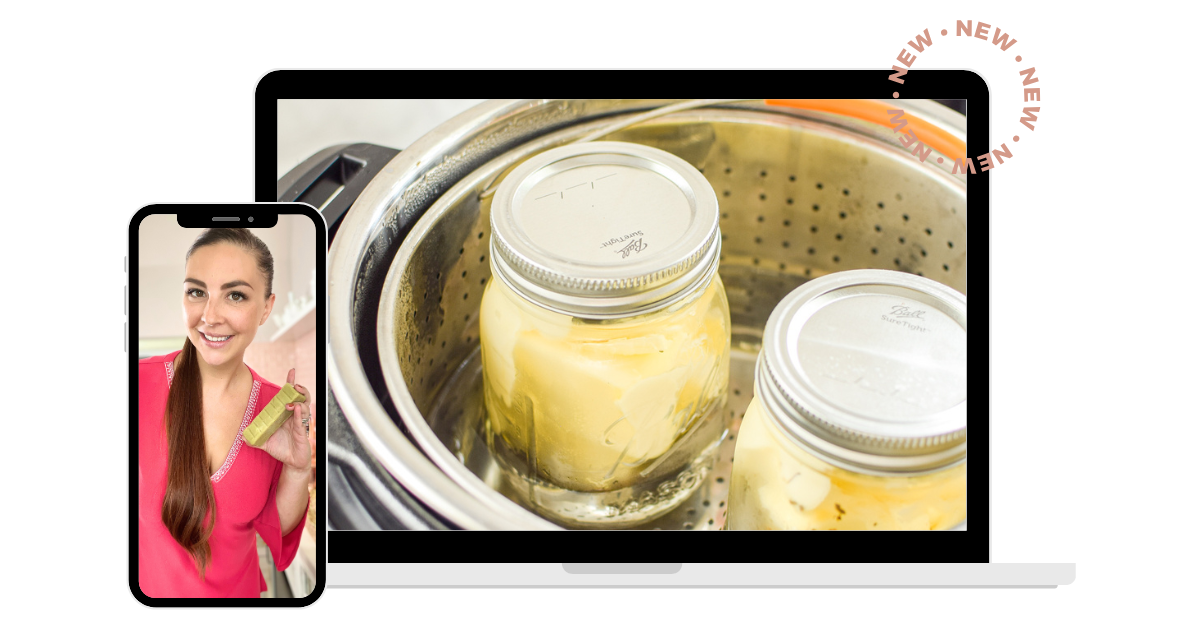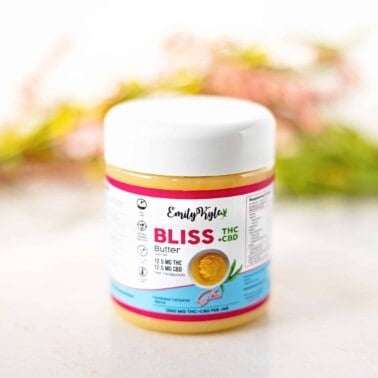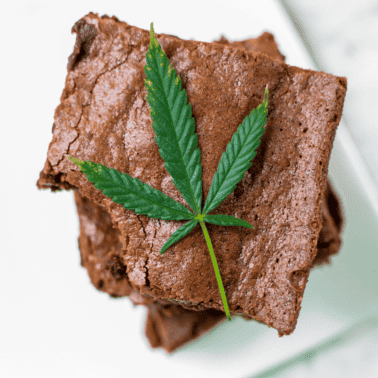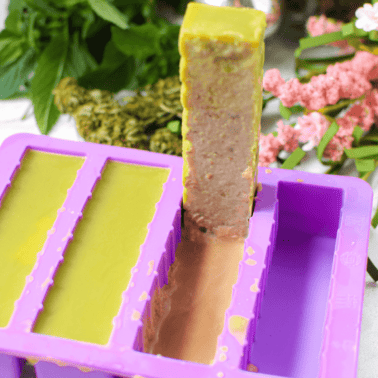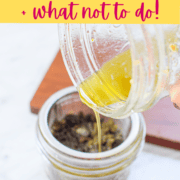Have you finally made cannabutter and are now disappointed, feeling it is too weak or not potent enough? Don’t worry; you’ve come to the right place. Here you will find step-by-step instructions for fixing the weak cannabutter you already have and tips and tricks to help you make a perfect final product the next time.

Table of Contents
Article Features
- The best way to fix weak cannabutter
- Things NOT to do when trying to fix this problem
- Want to skip the work? Enjoy the convenience and exceptional flavor of my Bliss Cannabutter – no fuss, no mess, just top-quality cannabutter delivered straight to your door. Now shipping across the United States!
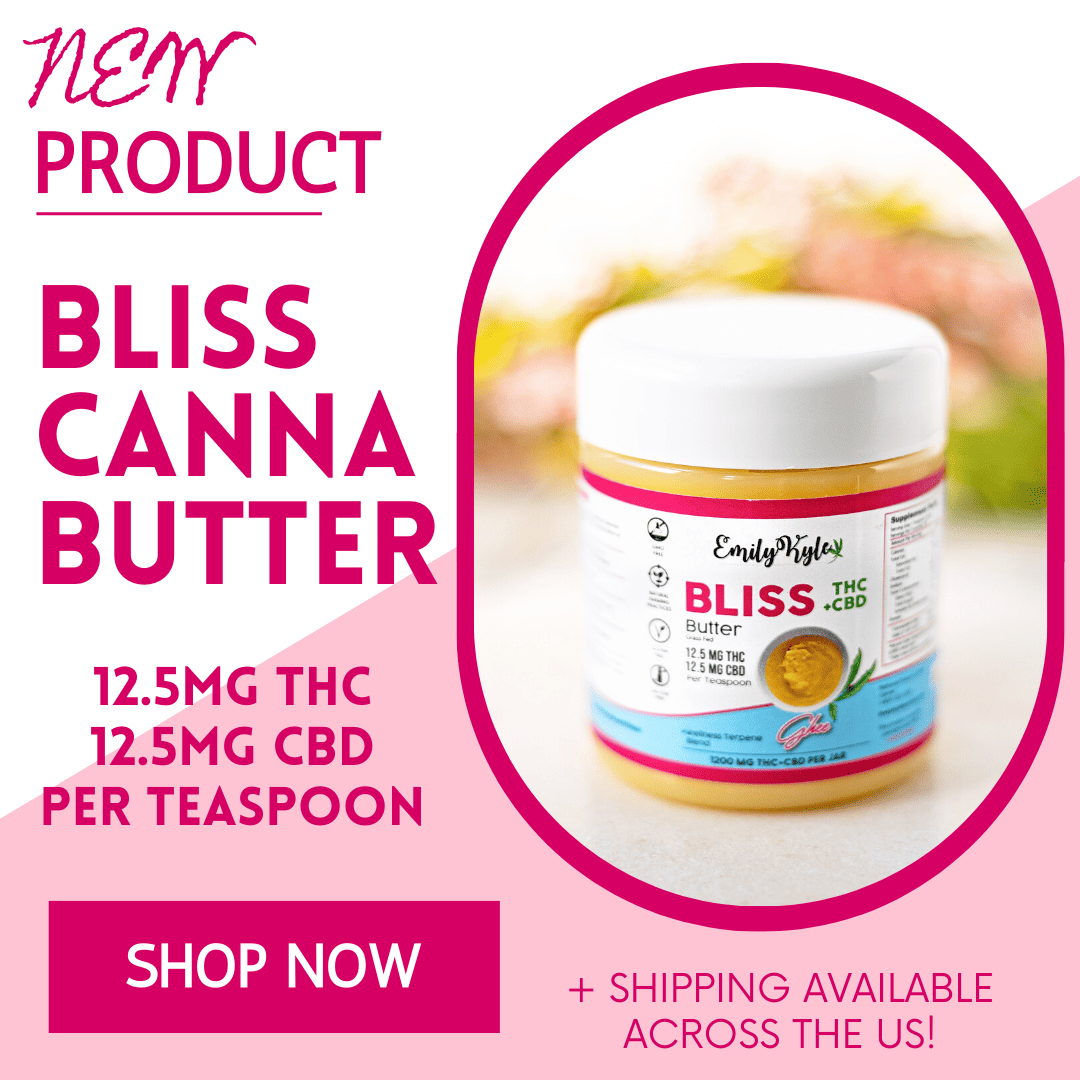
Why You Will Love This Guide
Cannabutter is a great way to add an extra kick to your favorite recipes. However, sometimes you get a batch of cannabutter that’s just not up to par.
We all feel disappointed when we realize our homemade cannabutter isn’t as strong as it should be.
But don’t fret; there are a few easy ways you can fix weak cannabutter and make it great again.
Members of my Well With Cannabis Community have been sharing their tips with me, and I’ve put them together in one comprehensive guide for you.
From ingredient selection and preparation methods to determining dosage and storage advice, we’ll cover everything you need to know to make creamy, delicious cannabutter with maximum potency.
How to Fix Weak Cannabutter
If you are sitting here with a container of cannabutter that is too weak but still too precious to toss, don’t worry, you can re-infuse it!
The best way to fix this problem is to melt the cannabutter, add fresh new decarbed cannabis, and infuse again.
If your cannabutter recipe calls for 7 grams of cannabis and you want it to be twice as potent, you would add another 7 grams, this time for 14 grams.
If unsure how much cannabis you should add, I recommend playing around with the numbers inside the edible dosage calculator as a first step to guesstimating the amount of THC in your final product.
How to Reinfuse
Step 1 – You first need to weigh out and then decarb your desired amount of additional cannabis flower to use.
Step 2 – Place your decarbed cannabis and weak cannabutter into a mason jar.
Step 3 – Place the mason jar into your water bath of choice. Choose from the following methods:
Step 4 – Allow the infusion to sit in the water bath for another 4 hours, or your desired amount of time. When done, strain and proceed as usual.
Make Good Cannabutter The First Time
I hope the instructions above help you fix the weak cannabutter you’ve already made, but how do you move forward and make a better cannabis butter the next time?
By following these tips and tricks below, you can make a higher-quality cannabutter that hopefully provides the desired effect you’re looking for the first time.
Start with Quality Cannabis
First things first, when you are working with cannabis, the cannabinoid content matters most.
This means the % THC (or other desired cannabinoid) present in the plant. For example, a high-quality flower with 23% THC is more than twice as potent as a cannabis flower with 11% THC.
Poor-quality cannabis will yield poor-quality cannabutter no matter what you do, so make sure to use high-grade flowers for the best results.
Know Your Products
Not all types of cannabis can be treated the same when making cannabutter or any homemade edibles because each type tends to have different potency levels.
For example, gram for gram, a cannabutter made with kief could be four times as potent as a cannabutter made with trim.
In the most general sense, listed below are common products ranging from most potent to least potent:
- Concentrates
- Kief
- Flower
- Trim
- Fan leaves
- Stems or stalks or roots
Explore Your Ratio
The ratio of cannabis to how much regular butter you use in your infusion will have the next greatest impact on the final potency.
If you infuse 7 grams of cannabis flower into two sticks of butter, it will be twice as potent then if you infuse the same amount into four sticks or a pound of butter.
You can use my flower-to-oil ratio guide to get started. There is a doubled-up option for those who have a high tolerance.
From there, you can use my edible dosage calculator to input the values and get a rough guesstimate of the potency of your cannabutter.
Decarb
I’ve heard my fair share of folks say: “back in my day, we didn’t do that decarboxylation thing, and our butter turned out just fine.”
And that’s OK; I’m totally glad it came out good back then!
But you can’t argue with science, and decarboxylation is a real thing that can greatly impact the quality of your final product.
When cannabis plants are growing in the ground, the raw cannabis material does not contain a lot of THC; it actually contains more THCA.
The major difference? This THCA is non-intoxicating, meaning it will not get you high.
By simply baking your cannabis in the oven or Instant pot, you can create the conversion of THCA to active THC, leading to a much more potent end product with greater effects.
Of course, if your personal preference is that you do not like to be intoxicated or the feeling of being high, you are welcome to skip the decarboxylation process and enjoy the benefits of cannabinoid acids like CBDA and THCA.
Go Low and Slow
When making cannabutter, low and slow is always best during the infusion process.
The key is to keep a consistent, low temperature so that there is no risk of burning off any of those precious cannabinoids while still high enough to extract them effectively from your weed.
A good rule of thumb is to keep your heat source between 160-200°F (71-93°C).
That is why we often recommend a water bath in a crock pot or slow cooker because it maintains a low heat and can never get above 212°F.

What Not To Do
There is a fair share of bad advice out there, and I want to help you avoid making mistakes when making your own cannabutter.
For the best final outcome, here is what not to do when making cannabutter.
Of course, as I always say, there is no “right” way to do cannabis, so if you like one of these options below, don’t let me stop you from enjoying it your way.
Do Not Grind
Some people recommend grinding the cannabis up as finely as possible, but I only recommend this if you plan to add the powder directly to food.
If you plan to make an infusion of butter or oil, it is a better idea to break the flower buds into smaller pieces gently.
When you grind the cannabis, you create more surface area to release chlorophyll.
Chlorophyll is the pigment that gives cannabis butter the unpleasant green taste and smell or herbal flavor.
By skipping the grinding process, you are not sacrificing your potency but rather increasing palatability.
Do Not Increase Heat Intensity
While increasing the temperature might help extract cannabinoids from your weed faster, we generally want to avoid high temperatures to preserve the cannabinoids and terpenes.
THC begins to evaporate at 340° Fahrenheit and above; here, you risk burning or evaporating off all those precious THC molecules.
Terpenes and other compounds begin to evaporate at much lower temperatures.
We generally want to keep as many of these intact as possible because they contribute to the entourage effect, which is responsible for different effects.
Do Not Steep Longer
Another questionable option is to steep the butter for longer than usual—much longer, in fact.
Many old-school methods of making cannabutter call for steeping for just 8-12 hours; try steeping for 24 or 48 hours (or even longer!)
While this will give your cannabis plenty of time to infuse with the butter, resulting in a stronger end product, the downside is the excessive green taste and color.
The longer the plant material and butter sit, the more chlorophyll will be absorbed into the final product.
If you do not mind the taste and smell, feel free to experiment with different extraction processes and times to find what works best for you.
Do Not Add Lecithin
I often recommend adding lecithin to cannabis edibles for recipe stability or to increase bioavailability.
However, you definitely do not want to add lecithin to weed butter if it is made with regular salted or unsalted butter.
This is because regular butter causes the separation of the oil and unwanted water and milk solids in the butter.
Adding lecithin will force the oil and water to reattach, leaving a wet, soupy mess.

Notes & Expert Tips
- If you need high doses for pain relief, consider using concentrates or kief to up the THC content.
- Don’t forget to save your leftover plant material for other recipes. That plant matter can be used in pot brownies, pesto, steak, and more.
- Just be careful as you increase your milligrams of THC; too much THC in marijuana edibles can potentially cause a bad experience. If you’re unsure how to dose, check out this dosing guide.
- If you find yourself needing melted butter, avoid the microwave. Find different ways to soften your butter here.
- Keep in mind the combination of cannabis strains can also greatly impact your desired effects.
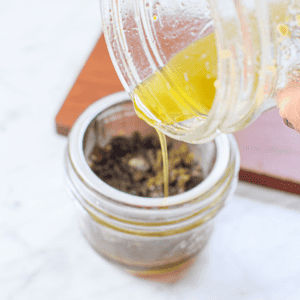
How to Fix Weak Cannabutter
Equipment
What You Need
- 1 cup weak cannabutter any amount OK
- 7 grams decarbed cannabis flower any amount OK
Instructions
- You first need to weigh out and then decarb your desired amount of additional cannabis flower to use.
- Place your decarbed cannabis and weak cannabutter into a mason jar.
- Place the mason jar into your water bath of choice, options include a crockpot, slow cooker, stovetop, infusion machine, etc.
- Allow the infusion to sit in the water bath for another 4 hours, or your desired amount of time. When done, strain and proceed as usual.
Notes
Frequently Asked Questions
Yes! You can definitely use this same process to fix any canna oil you want to re-infuse, from coconut oil to olive oil or MCT oil.
If you have made a tincture with high-proof alcohol, you can add more cannabis to the tincture using the Green dragon or Golden dragon method.
This is unique to each person and dependent on your own endocannabinoid system. If you’re unsure where to start, starting with smaller amounts of THC, like 2.5-5 mg, is always recommended. Follow this dosing guide and be safe.
Yes. However, there is a theory that the fat molecules can only hold so many mg of THC at some point. I do not have research to know what this threshold is or what Is considered to be enough fat or too much weed for the extraction process.
Store your final product in an airtight container in the refrigerator according to the expiration date on the butter you used. You can store it for a long time in the freezer. If you keep it in the freezer, wrap the cannabutter in individually sized portions to ensure easy and convenient dosing. If you want to leave the cannabis butter at room temperature, use it within 5-7 days, as the shelf life is not that long. Learn more about how to store edibles here.
Have no fear; you can still bake your favorite brownie and cookie recipes. While the oven temperature is set to 350°F(177°C), it doesn’t mean the food temperature gets that high. Learn more about why it is safe to bake edibles at higher temperatures.
Conclusion
Weak cannabutter doesn’t have to be a deal breaker—there are plenty of ways to save your batch from disaster.
Whether it’s adding more cannabis or increasing the quality of your inputs, there are several options available that may help turn your weak cannabutter into something great again.
With a little effort and creative problem-solving, you can still get delicious results from your homemade cannabutter!
More Cannabutter Articles For You
Shop with Emily
Shop Now: Bliss Cannabutter
Articles & How-To Guides
25+ Amazing Recipes Using Cannabutter
All Things Cannabutter
What Color Should Cannabutter Be?
All Things Cannabutter

